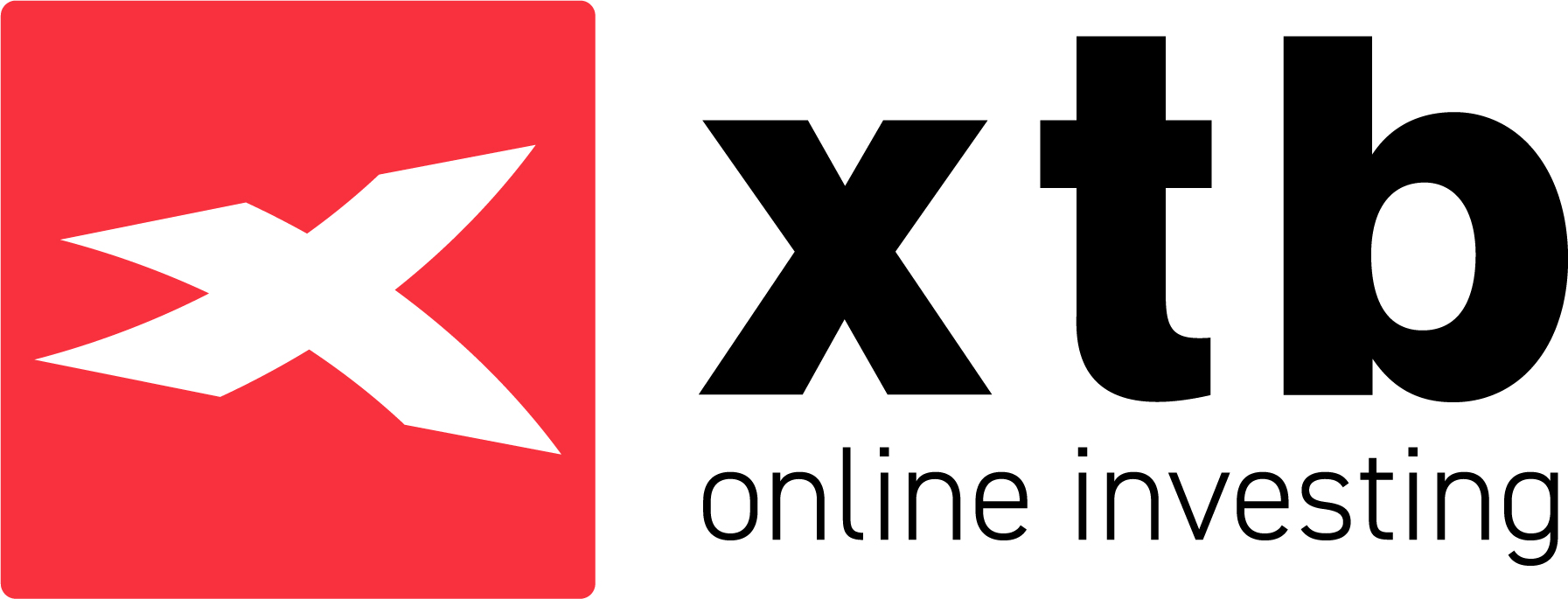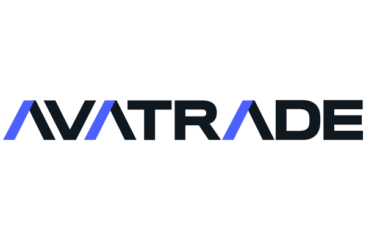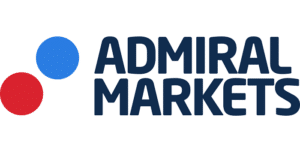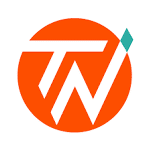Paper Trading UK Guide 2025
While trading can be exciting, it can also be risky. That’s especially true when you’re trying out a new trading strategy or transitioning to a new brokerage.
With paper trading, you can practice trading without risking real money. UK paper trading accounts give you access to many of the same features as live trading accounts, but without any of the pressure to perform well in the market.
In this guide, we’ll explain how paper trading works in the UK and why it’s worthwhile for many traders. We’ll also cover how to choose a UK paper trading account and highlight some of the most popular trading platforms you can try today.
What is Paper Trading?
Paper trading is simply simulated trading. The term ‘paper trading’ is a holdover from the days when practice trading was done with a pencil and paper – traders would simply record positions they would take if they were trading, and then add up the results of their imagined trades.
With paper trading, you’re still trading with real market data. The only thing that’s simulated is the money. Instead of committing your own, real money to paper trades, you’re given digital money that isn’t worth anything.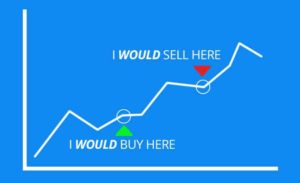
Paper trading is a great way to try out a new trading strategy or simply practice trading without the risk of losing real money. If you do lose simulated money while paper trading, it’s not a big deal. You can reset your account balance at any time and start from scratch.
Of course, the catch to UK paper trading is that you can’t make real money, either. Any profits you earn in a paper trading account exist only inside the market simulation, not in your real trading account.
Features of Paper Trading UK
Paper trading in the UK plays an important role in helping traders succeed. By using a trade simulator with real market data, you can test out new trading strategies or practice executing a strategy that needs improvement.
This allows you to see whether a strategy has merit – that is, whether it can deliver consistent profits – before you risk real money on it. If a trading strategy isn’t very good, you can save yourself some potentially significant losses by finding that out inside a UK paper trading account rather than inside your live trading account.
The same is true for trading a new asset class. If you’ve always traded stocks, for example, there can be a steep learning curve to switch to options trading or commodity trading. With a paper trading account, you can get a handle on how the prices of these assets move and how you can trade them profitably.
Another good use of paper trading in the UK is to test out new trading tools. For example, if you want to incorporate a news feed or automated technical analysis tool into your stock trading, you can see whether those tools are helping or hurting you inside a paper trading account. The same goes for testing out forex signals or forex robots before deploying them for live forex trading.
UK paper trading is also a good way to test out a new stock broker or forex broker. Most brokers’ paper trading platforms give you access to the same charting tools and order entry system as their live trading platforms. So, you can familiarize yourself with the trading platform and fully understand the order execution process before putting money on the line.
Paper Trading Limitations
The main limit to paper trading is psychological. When paper trading in the UK, it’s possible to change your approach to trading without realizing it. For example, you might be willing to make much riskier trades with an inside paper trading account than you would be when trading real money, simply because you know that any losses you incur are simulated.
For paper trading to be valuable, you should approach it in the same way you approach live trading to the greatest extent possible. If you normally set stop losses and take profit levels with every live trade, make sure to set them with every simulated trade, too. Along the same lines, if you typically wouldn’t use leverage for your live trades, don’t add leverage to your paper trades.
One way to develop good habits around paper trading is to start out trading as you would in a live session, using a strategy you already know. Once you’ve gotten into a groove, then try switching to a new strategy or incorporating a new trading tool. You’ll be much more likely to approach the strategy or tool you want to evaluate with a risk tolerance that reflects how you normally trade.
Paper Trading Strategies
Interested in using paper trading to try out new strategies? Here are three strategies that you can practice in a UK paper trading account:
Scalping
Scalping trading is a popular day trading strategy that involves placing many short-term trades. The idea behind scalping trading is to trade at the start of a price movement when it’s most likely to be strong and directional. Scalping traders don’t wait around for the price movement to complete, though – the idea is to exit your trade quickly before the price move can collapse or reverse.
The return from any single scalping trade is typically very small. Scalping traders place dozens of trades per day to compound their earnings.
Swing Trading
Swing trading is a multi-day trading strategy. With swing trading, the goal is to profit off of shifts in momentum. You can enter a position at the beginning of a strong price movement, like a breakout or a reversal, and then hold your position as the movement develops.
Price Action Trading
Price action trading is a trading strategy that relies on price data rather than on technical indicators. The magnitude and speed of price changes offers information about where the price is headed next, while technical indicators typically lag the market by several time intervals.
This style of trading can be subjective, in that two traders can look at the same setup and come to different conclusions about what the price will do next.
How to Choose a Paper Trading Platform
While all paper trading platforms give you access to a simulator, not all platforms are made equally. Choosing a suitable paper trading platform is important to ensure that you’re getting the most out of your trading practice. So, let’s take a closer look at some of the factors you should consider when choosing a platform for UK paper trading:
Account Size
A good place to start when choosing a paper trading platform is to look at the size of your simulated trading account. Some platforms let you choose the size of your account, while others assign you a starting balance. That starting balance could range anywhere from £1,000 to £100,000.
The size of your account should ideally be in line with the size of your live trading account. That way, you’ll be placing trades of roughly the same magnitude and you’ll have the same margin balance for placing leveraged trades. Trading with a massive paper trading account can give you a false sense of your potential returns.
Time Limit
Most high-quality paper trading platforms don’t put any limits on how long you can use your demo account. However, make sure to check whether you can reset your account at any time. Some paper trading platforms require you to reach a £0 balance or to contact customer support to clear your simulated trading history and start over.
Tradable Assets
Popular paper trading accounts will have not just a wide variety of assets to trade, but specifically the assets that you’re interested in trading. If you plan on trading, say, Tesco shares, then your paper trading account should offer simulated trading for this stock. Most UK brokers offer the same assets in their paper trading platforms as they do in their live trading platforms.
Fees
Ideally, paper trading in the UK should be free. At many brokers, it is. There are no commissions or spreads since you’re not placing real trades, and many of the most popular paper trading platforms don’t charge account fees.
However, watch out for brokers that charge inactivity fees or other account fees. If you’re only paper trading and not placing live trades for a period of several months, you could incur an inactivity fee.
Trading Platform and Tools
The trading software that you get access to varies widely between paper trading platforms. Some platforms use proprietary software that has been developed by a broker. This is great if you want to explore a new broker since you get access to all the charting and order entry tools. That said, proprietary paper trading platforms are unique to a single broker – so you’ll have to learn a whole new software interface if you switch platforms in the future.
Other brokers offer UK paper trading using popular – and common – software like MetaTrader 4 or 5. Since this software is used by multiple brokers, strategies, techniques, and custom indicators transfer well across platforms.
Another thing to consider is whether your paper trading account is available on mobile devices. Unfortunately, this isn’t the case for many trading platforms that have mobile trading apps. You may be able to place live trades across devices, but you’re limited to paper trading on your computer.
Educational Tools
Some of the most popular paper trading platforms offer educational tools along with trading tools. These tools can help you get the most out of paper trading by offering tips and insight as you trade. For example, some demo accounts can point out common trading setups or candlestick patterns to help you recognize them in real-time. While more experienced traders might not need these educational add-ons, they can be extremely useful for beginners.
Customer Service
Most traders will never need help with their paper trading accounts. But if something does go wrong, it’s helpful to have someone to talk to. Check whether your trading platform offers customer support and whether it’s available 24/7. It’s also worth ensuring that support is available for paper trading accounts, not just live trading accounts.
Popular Paper Trading Accounts 2022
With those criteria for what makes a good paper trading account in mind, how do you find the one that suits you? There are dozens of paper trading accounts available in the UK. To help you choose, let’s take a look at five of the most popular paper trading platforms you can get started with.
1. XTB
XTB is a popular UK stock broker that offers trading on more than 2,100 shares and ETFs – all 100% commission-free. Furthermore, spreads at this broker start at just 0.015% for US-listed stocks, making it one of the cheapest options available for UK traders. XTB doesn’t require a minimum deposit to get started and the broker doesn’t charge deposit or withdrawal fees.
XTB’s custom-built stock trading platform – xStation 5, is also available for the web and mobile devices and it comes packed with research tools. You’ll find technical charts and dozens of studies to start, plus a market news feed that includes actionable trade ideas with annotated price charts. The platform also has a market sentiment gauge which allows users to easily see what other traders think about where a stock’s price is headed.
XTB’s platform also includes a stock and ETF screener, which can be really useful for traders. With this tool, users can easily scan the market for stocks that are taking off or that seem poised for a fall. Using the screener, it’s possible to create watchlists and narrow down your search to find better trading opportunities.
XTB is regulated by the UK FCA and CySEC and offers negative balance protection for all traders. In addition, the broker offers customer support by phone, email, and live chat, available 24/5.
76% of retail CFD accounts lose money.
2. AvaTrade
AvaTrade is a UK CFD broker that offers 0% commission trading on over 600 global stocks. The platform also carries dozens of exchange-traded funds (ETFs), stock indices, commodities, and forex pairs for trading. Notably, AvaTrade also offers trading on forex options – but it doesn’t offer stock options at this time.
AvaTrade has a few different trading platforms you may use to trade stocks. Like Pepperstone, this broker gives all traders access to MetaTrader 4 and 5.
Alternatively, the AvaTrade web trading platform and AvaTradeGO platform are available on iOS and Android devices as well . You get watchlists, a market news feed, and dozens of technical studies. On mobile devices, users can access full-screen charts and enter orders with just a few taps.
AvaTrade also has its own social trading app for iOS and Android, called AvaSocial. Although this isn’t integrated into AvaTradeGO, it’s simple to switch back and forth between sharing ideas and setting up trades. AvaSocial also enables copy trading, so you have the ability to mimic the portfolios of more experienced stock traders in just a few taps.
AvaTrade is regulated by the UK FCA and Australia’s ASIC. The platform requires a $100 minimum deposit to open an account and you may pay by credit card, debit card, or bank transfer. AvaTrader offers 24/5 customer service.
Your capital is at risk.
3. FP Markets

One of FP Markets’ standout features is its commitment to offering competitive pricing with tight spreads, ensuring that traders can maximize their profits. The broker also supports various trading platforms, such as MetaTrader 4, MetaTrader 5, and IRESS, allowing traders to choose the platform that best suits their trading style and needs.
FP Markets strongly emphasizes education and resources, providing traders with access to a wealth of educational materials, webinars, and market analysis. This dedication to trader education helps both beginners and experienced traders enhance their trading skills and make informed decisions.
Customer support at FP Markets is highly responsive and available 24/5, ensuring that traders receive prompt assistance whenever needed. Additionally, the broker is regulated by top-tier authorities like ASIC and CySEC, providing traders with a sense of security and trust.
In summary, FP Markets stands out as a reliable and versatile broker. It offers a robust trading environment supported by competitive pricing, excellent educational resources, and top-notch customer service.
Your capital is at risk
4. Pepperstone
Pepperstone is a popular UK stock brokers for traders who want to use MetaTrader 4 or 5. These popular trading platforms offer unparalleled tools for technical analysis, including the ability to create custom technical studies. You may also backtest trading strategies against historical price data to see how they are likely to perform.
This broker also offers a few extra tools that are built specifically for MetaTrader. For example, there’s a correlation heatmap so investors will be able to see whether the stocks you’re invested in typically move at the same time. There’s also an alarm management tool that lets you create custom alerts based on price changes, trading volume, and more.
Pepperstone carries thousands of share CFDs from the US, UK, Europe, and Australia. The broker’s charges vary based on the market you’re trading – US shares trade commission-free, while UK shares carry a 0.10% commission. So, this broker can be slightly more expensive than some of its peers.
Pepperstone is regulated by the UK FCA and the Australian Securities and Investments Commission (ASIC). The platform doesn’t require a minimum deposit to open an account, which is a major plus if you’re not ready to commit hundreds of pounds to trading just yet.
Your capital is at risk.
5. PrimeXBT
PrimeXBT is an innovative stock broker that caters to a diverse range of traders, from beginners to seasoned professionals. Known for its versatility and user-friendly interface, the platform offers an array of features designed to enhance the trading experience across multiple asset classes.
One of the standout aspects of PrimeXBT is its wide range of available markets. Users can trade in cryptocurrencies, forex, commodities, and indices all from a single account. This flexibility allows traders to diversify their portfolios and take advantage of different market opportunities without needing to switch between platforms.
PrimeXBT offers a suite of trading tools and advanced charting options to help traders make informed decisions. The platform integrates customizable indicators, drawing tools, and multiple timeframes, enabling users to tailor their charts to suit their individual trading strategies. Additionally, PrimeXBT provides leverage trading options, which can amplify potential profits for experienced traders.
The platform’s trading interface is sleek and intuitive, designed to make navigating the markets straightforward. Opening, managing, and closing trades can be done with ease, while the performance of live trades can be tracked in real-time. PrimeXBT also offers an innovative feature known as Covesting, which allows users to follow and replicate the trades of successful strategy managers, providing an educational and potentially profitable experience.
PrimeXBT also prioritizes the security and privacy of its users. The platform employs industry-standard security measures to safeguard user accounts and data, such as two-factor authentication and encryption. Customer support is available to assist traders with any queries they may have, ensuring a smooth and reliable trading experience.
In summary, PrimeXBT stands out as a comprehensive trading platform offering a variety of markets, robust tools, and an easy-to-use interface. Its emphasis on security, diverse asset offerings, and innovative features like Covesting make it an excellent choice for traders looking to explore and capitalize on global market opportunities.
Your capital is at risk.
6. Admiral Markets
Admiral Markets is a globally recognized online trading broker known for its comprehensive range of financial instruments and user-friendly platforms. With a presence in over 40 countries, the company has built a strong reputation for providing a reliable and secure trading environment for both beginner and experienced traders.
One of the standout features of Admiral Markets is its extensive selection of trading instruments, including Forex, stocks, commodities, indices, and more. This variety allows traders to diversify their portfolios and explore different markets with ease. The broker offers competitive spreads and flexible leverage options, catering to various trading styles and strategies.
Admiral Markets is also praised for its robust platforms, particularly MetaTrader 4 and MetaTrader 5, which are equipped with advanced charting tools, technical indicators, and automated trading capabilities. These platforms are available on both desktop and mobile devices, ensuring seamless trading experiences across all devices.
The broker places a strong emphasis on education, providing a wealth of resources such as webinars, tutorials, and market analysis to help traders make informed decisions. Additionally, Admiral Markets is regulated by several reputable financial authorities, ensuring a high level of trust and transparency.
Overall, Admiral Markets stands out as a top-tier broker, offering a comprehensive trading experience supported by excellent customer service and innovative tools.
Your capital is at risk
7. Trade Nation
Trade Nation is a well-established stock broker known for its reliability and comprehensive range of services. As an FCA regulated broker, traders can trust that their investments are in safe hands. Trade Nation offers a diverse selection of trading options, including stocks, CFDs, spread betting, and forex trading. One of the standout features of Trade Nation is its commitment to providing low-cost fixed spreads, starting from an impressive 0.6 pips for CFDs, ensuring traders can navigate the markets without any surprise fees.
In addition to its impressive range of services, Trade Nation offers compatibility with popular trading platforms, including MetaTrader 4 (MT4) and TN Trader. MetaTrader 4 is renowned for its user-friendly interface and advanced charting capabilities. It is a preferred choice for many traders due to its extensive range of technical indicators, customizable charts, and automated trading options through Expert Advisors (EAs). With Trade Nation’s integration of MT4, traders can access a seamless trading experience with all the familiar features they rely on for their trading decisions.
Trade Nation has developed its proprietary trading platform, TN Trader, catering to traders who prefer a platform tailored to the broker’s offerings and user experience. TN Trader boasts a user-friendly interface and is equipped with a suite of tools, including advanced charting, analysis tools, and real-time market data. It is an excellent option for traders who prefer a platform specifically designed to complement Trade Nation’s services and trading conditions.
Trade Nation also provides regulated signals software that can be used to guide stock trading decisions. As well as this, users can also access a variety of educational resources and analysis tools that can be used to improve trading strategies and make informed stock trading decisions. Users can practice different strategies with the free demo account.
75% of retail investor accounts lose money when trading CFDs with this provider.
8. IG

IG also offers two of the most popular charting packages on the market today: MetaTrader 4 and ProRealTime. MetaTrader 4 allows you to practice using forex signals and forex robots, as well as to design your own custom indicators. ProRealTime supports any type of asset and similarly allows you to create your own indicators and to backtest a new trading strategy. Both platforms have steep learning curves, so paper trading with them can be very helpful.
Paper trading with IG is free and all trades with this broker are commission-free. However, IG does charge a premium for its services through CFD spreads. There is an inactivity fee, but it won’t take effect for two years.
| Stock Trading Fees | £8 per trade (£3 for active accounts) |
| Deposit Fees | No (0.5% – 1% for credit cards) |
| Withdrawal Fees | No (£15 for international bank transfers) |
| Inactivity Fees | £12 per month after two years |
| Monthly Account Fees | No |
Sponsored ad. There is no guarantee you will make money when trading CFDs with this provider.
9. Plus500

This broker also offers a wide range of trading at a low cost. You can use CFDs for stock trading, forex trading, commodity trading, and cryptocurrency trading. All trades are commission-free and Plus500 has some of the most competitive CFD spreads in the UK. Just watch out for the inactivity fee when paper trading, which takes effect after just three months.
Plus500’s proprietary charting software is convenient. It comes with dozens of built-in technical indicators and offers the ability to set price alerts on any asset. Plus500 has a mobile trading app that can be used for paper trading. Price alerts you set on the desktop can even be pushed to your smartphone to help you stay on top of the market.
| Stock Trading Fees | 0% commission + spread |
| Deposit Fees | No |
| Withdrawal Fees | No |
| Inactivity Fees | $10 (£7.60) per month after three months |
| Monthly Account Fees | No |
10. IUX.com

IUX.com boasts competitive spreads, a key factor for maximizing your profit potential. They also advertise high leverage, which can amplify gains (and losses) for experienced traders comfortable with calculated risks. The MT5 platform is a user-friendly and powerful tool, providing advanced charting functionalities and a robust set of technical indicators to help you make informed trading decisions.
IUX.com understands that every trader has unique needs. That’s why they offer a variety of account types, allowing you to select the option that best suits your capital and trading style. This level of flexibility ensures you can enter the market with confidence, knowing your account is set up for your specific goals.
If you’re looking for a forex broker that prioritizes your trading experience, IUX.com is definitely worth considering. Their diverse platform, competitive offerings, and focus on trader empowerment make them a compelling choice for those seeking to navigate the forex market.
Your capital is at risk
Factors to Consider when Paper Trading UK
- Risk-free environment for learning how to trade
- Try out new strategies or asset classes
- Often free or inexpensive to use
- Familiarize yourself with a broker’s trading platform
- Test trading tools to see how they integrate with your strategy
- Possible to take bigger risks when trading with simulated money
- Can incur inactivity fees at some brokers
- May encourage taking greater risks than you would when live trading
11. Fineco Bank

Fineco Bank is also popular with UK investors as it allows you to get started with a small investment of £100. If you do feel comfortable investing on a DIY basis, Fineco Bank offers multiple research tools and ongoing market commentary.
When it comes to safety, Fineco Bank is heavily regulated. Your funds are protected by the FSCS and the broker holds that all-important FCA license
| Commission | Starting from £0 commission on FTSE100, US and EU Shares CFDs, market spread only and no additional markups. |
| Deposit fee | Free |
| Withdrawal fee | $0 |
| Inactivity fee | None |
| Account fee | None |
| Minimum deposit | £0 |
| Stocks markets | Access to 13 stock markets |
| Tradable assets | CFDs, Forex, Commodities, Stocks and ETFs, indices, mutual funds, bonds, options, futures, |
| Available Trading Platforms | Web-based trading platform, mobile trading app, desktop trading platform |
Your capital is at risk
How to Start Paper Trading
Ready to jump into paper trading in the UK? We’ll show you how to get started through the steps presented below:
Open a Trading Account
Head to the broker’s home page and click ‘Join Now.’ Then enter a new username and password for your account along with personal details like your name, email, and birthdate.
You’ll also be asked to verify your identity to comply with UK government regulations. You don’t need to do this to start paper trading, but it’s a good idea to complete this step now if you plan to move to live trading later. Simply upload a copy of your passport or driver’s license and a copy of a recent bank statement or utility bill.
Deposit Funds
You may be asked for a minimum deposit when you open a new account, even if you only plan to practice trading with a paper account. This money is not at risk when you are paper trading, and you are free to withdraw it later.
There are often several ways to pay:
- Credit or debit card (Visa or Mastercard)
- Neteller
- Skrill
- Bank transfer
- Wire transfer
Start Paper Trading
To start paper trading, head to your dashboard and click the ‘REAL’ button in the navigation pane. In the drop-down, select ‘Virtual Portfolio’ to switch from live trading to paper trading.
You can place your first paper trade by searching for any asset in the dashboard and then clicking ‘Trade’. This will open an order form where you can enter how much virtual money you want to trade. Just as for a live trade, you can set stop loss or take profit levels and choose whether to use leverage.
When your paper trade is ready, click ‘Open Trade’ to complete your first simulated trade.
Conclusion
Paper trading is a relatively safe way to practice trading. You can try out new strategies or understand how a new asset class works before committing money to trading it. While UK paper trading can be a very effective tool, it’s important to approach it as if you were trading real money. Otherwise, paper trading makes it possible to shift your approach to take greater risks than you normally would.
If you wish to start paper trading today, many FCA-regulated brokers offer this feature.
